Cycle News Staff | April 29, 2017
2017 Honda CRF250L Rally & CRF250L First Ride – Honda helped put fun, uncomplicated and affordable back into trail riding when it introduced its all-new CRF250L in 2012 as a 2013 model. It was a sudden success for the Red company, a lot of which had to do to the bike’s modern looks, good overall small-bore performance, license plate on the rear fender, and, perhaps most of all, its miniscule $4499 price tag. Let’s put that into perspective, shall we. Compared to comparable models at the time, it sold for $700 less than Yamaha’s XT250, $600 less than the Kawasaki KLX250S, and $2191 less than Yamaha’s WR250R (the street-legal WR). Much of this had to do with the CRF250L being built in its Thailand facility (which is where the latest CRF250L and Rally are currently being built). Price has gone up some since then ($4999 for the 2016 L), but it was still a bargain and flying off the shelf.
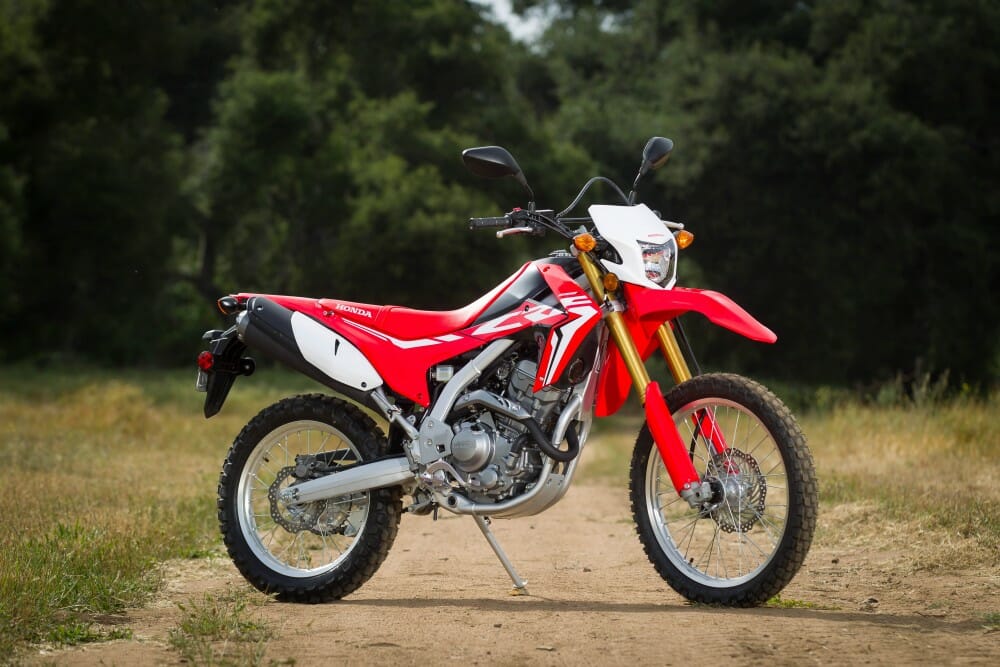 The CRF250L got its first upgrade since its 2013 debut.
The CRF250L got its first upgrade since its 2013 debut.
The CRF250L just experienced its first update since its 2013 birth and with it comes a brother, the CRF250L Rally, both making their debut in 2017. We got the chance to sample them both on the road and on the trail this week on a one-day ride hosted by Honda at its JCR Racing’s facility in Murrieta, California. Half the day was spent on the L, the other half on the Rally.
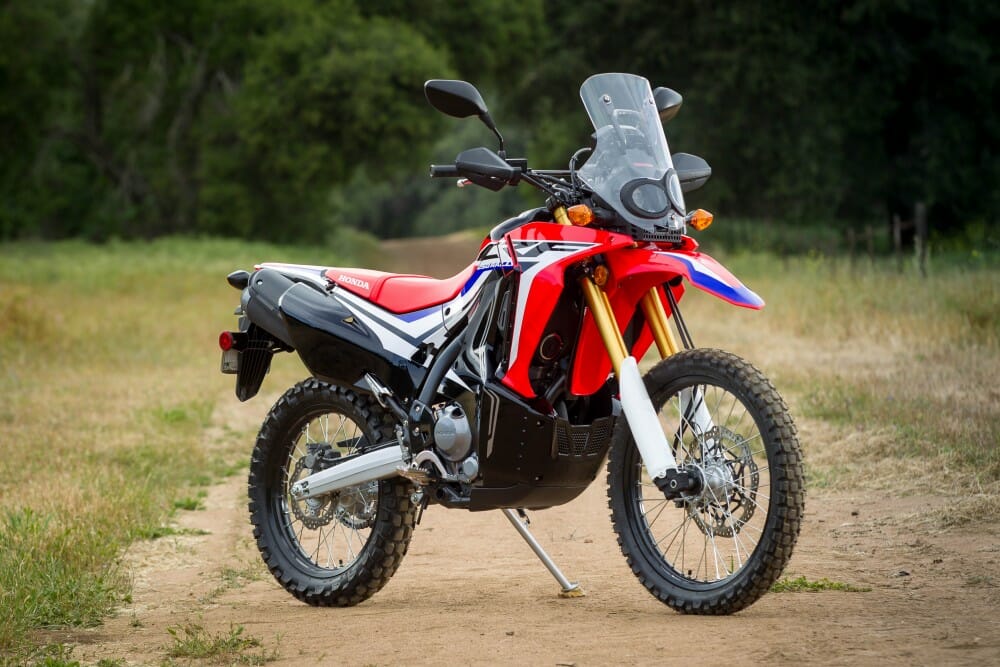 The new CRF250L Rally is based on the standard model. You get a lot for an extra $650.
The new CRF250L Rally is based on the standard model. You get a lot for an extra $650.
Here are our first quick thoughts on both bikes:
2017 Honda CRF250L Rally & CRF250L First Ride
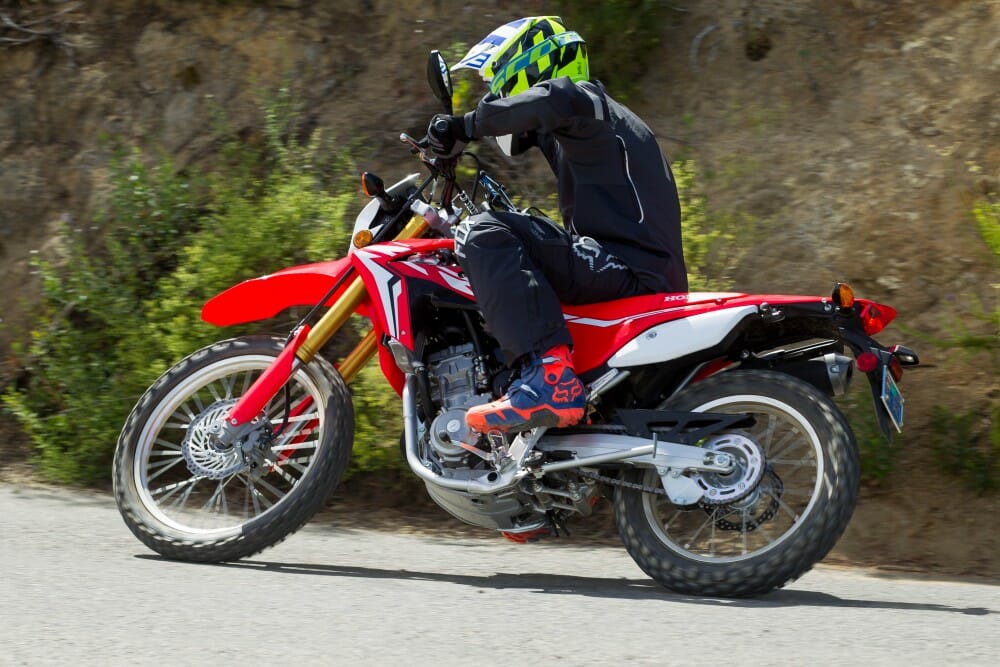 The CRF250L gets a boost of power.
The CRF250L gets a boost of power.
2017 Honda CRF250L
The “L” is indeed an improvement over the older model. Not only does the new one look better but it also has more power and you notice that immediately when you click through its six gears for the first time. Honda accomplished this in more ways than one: by increasing the EFI’s throttle body 2mm (36mm to 38mm), redesigning the now two-chamber muffler (that is also more compact) and enlarging the exhaust header pipe. Honda claims that peak horsepower is now at 22.8 hp, an increase of 2.4 hp. This is a significant gain when you’re talking about a small-bore 249cc four-stroke engine, and super important when you’re trying to wring out every drip of power from it. While they were at it, Honda improved throttle response by reshaping and lengthening the air intake boot 100mm and redesigning the airbox. Again, you feel the power performance improvement on the trail, for sure; most of that power gain is felt off the bottom and on top. Midrange feels about the same as before.
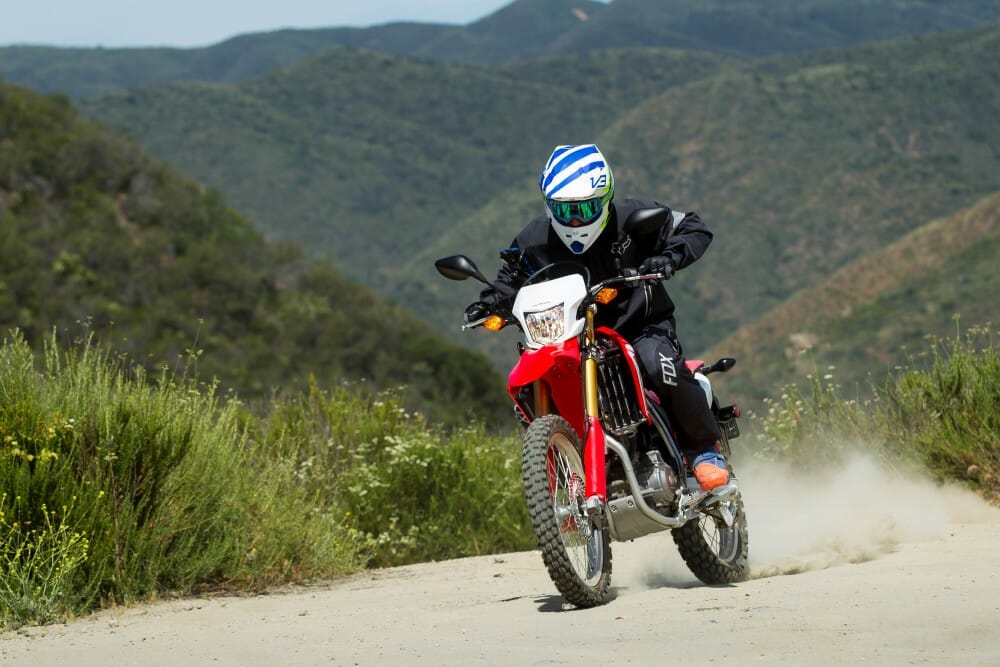 MSRP has risen to $5199 but the CRF250L is still a bargain.
MSRP has risen to $5199 but the CRF250L is still a bargain.
And throttle response? Excellent. But we didn’t have any complaints before.
Compared to the previous L, another noticeable difference on the trail is braking—the 2017 CRF250L is now available with ABS. For the trails, the ABS can be turned off, except for the front brake. Even left fully on, the ABS works so well that you’re not immediately inclined to turn it off when you get on the dirt.
2017 Honda CRF250L Rally & CRF250L First Ride
2017 Honda CRF250 Rally
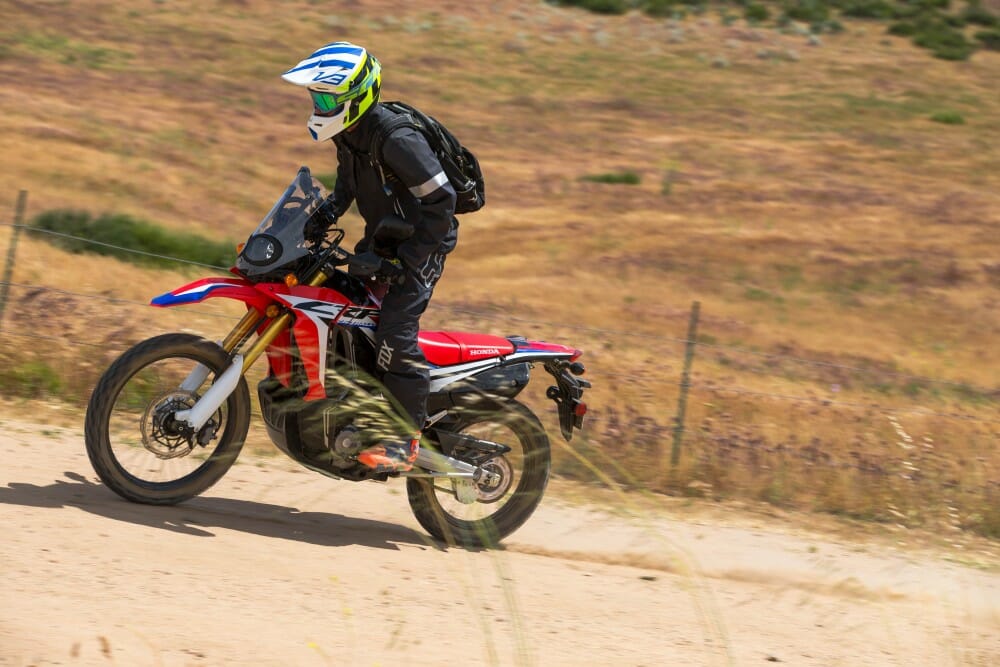 The CRF250L Rally is better suited for longer riding.
The CRF250L Rally is better suited for longer riding.
The Rally got all of the same changes as the L and then some. Besides some of the obvious differences, like the frame-mounted windscreen, hand guards, skid plate and plastics, the Rally, which is designed for longer, more adventure-type of riding than the L, features a larger 2.7-gallon (up .6 gallons) fuel tank, stiffer suspension with slightly more wheel travel at both ends, a larger-diameter front disc brake and more ground clearance. It’s also about 25 pounds heavier than the L.
On the tarmac and at speed, the Rally is noticeably more comfortable than the L. The windscreen does a very good job keeping windblast off the rider, and the 40mm larger-diameter front disc brake is noticeably stronger than the L’s, requiring less effort by the rider to get it slowed down, while still offering good feel. We’d really like to see the bigger brake on the L, as well.
Power feels it tick more sluggish on the Rally, which makes sense since it’s hauling around 25 more pounds, but it’s really no big deal at all.
On the trail, the Rally still feels pretty light and agile like the L but noticeably more front-end heavy. This seems to only matter when you’re riding in soft sand; the Rally’s front end tends to tuck in a bit more than the L does. You quickly adapt by sitting back on holding the throttle wide open (literally), but you need to plan ahead since there is less power to help you out compared to higher-displacement (and much heavier) rally- or ADV-type bikes, which are real handfuls in the soft stuff. Front-end washout is also a bit more prominent on the Rally as it is on the L when riding over hard, slick surfaces. It’s not a huge difference, though, but front-end sensitive riders will notice it.
Suspension is just plain better on the Rally, mainly because it’s stiffer and doesn’t feel as “springy” as the L’s. As a result, it gives you a more confident-inspiring ride. There is also about an inch more wheel travel at both ends.
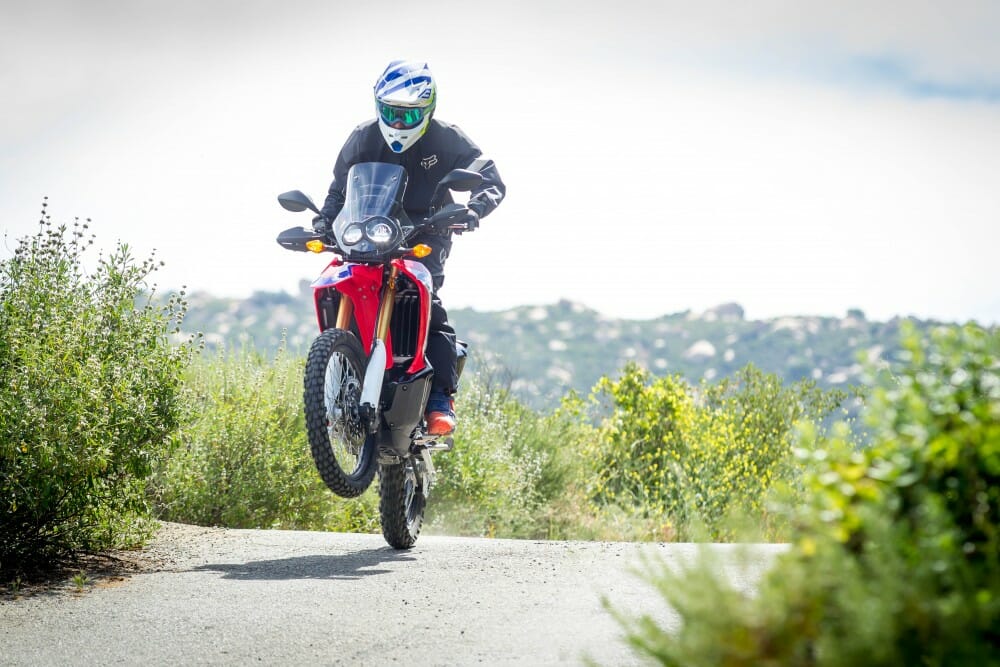 The Rally weighs about 25 pounds more than the standard.
The Rally weighs about 25 pounds more than the standard.
Taller riders might feel more comfortable on the Rally because of its almost inch-taller seat at 35.2 inches, which is actually a bit higher than the seat height of Honda’s premier ADV bike, the Africa Twin.
One of the coolest things about the Rally is just the way it looks. Thanks to great styling and top-grade plastics, you’ll have a hard time convincing friends that your new Honda CRF250 Rally cost you just $5899, because it looks more like a high-end Rally/Adventure bikes, such as the Africa Twin that starts at $13,299, which is still cheaper than most top-of-the-line adventure bikes.
The Rally cost about $750 more than the L but you get a lot for that extra money. If you do the math, you’ll notice that the CRF250L did go up in price slightly over the previous L, from $4999 to $5149, but the extra $150 is well worth it.
2017 Honda CRF250L Rally & CRF250L First Ride
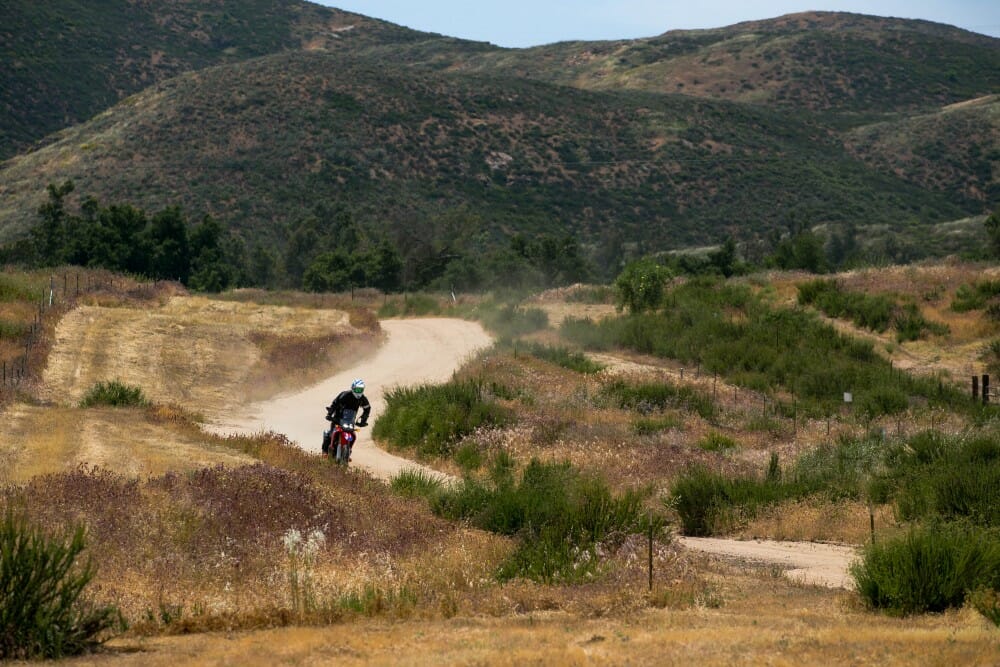 This is the whole idea for both models.
This is the whole idea for both models.
These are just a few of the things that stood out after riding the 2017 Honda CRF250L and CRF250L Rally for the first time. We have plans to ride both bikes at length in the near future, which will be followed by more in-depth tests. Stay tuned.
Click here for more motorcycle reviews.
2017 Honda CRF250L Rally & CRF250L First Ride